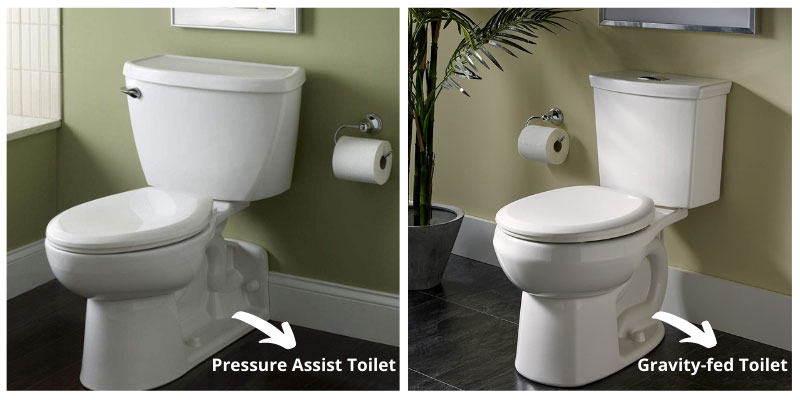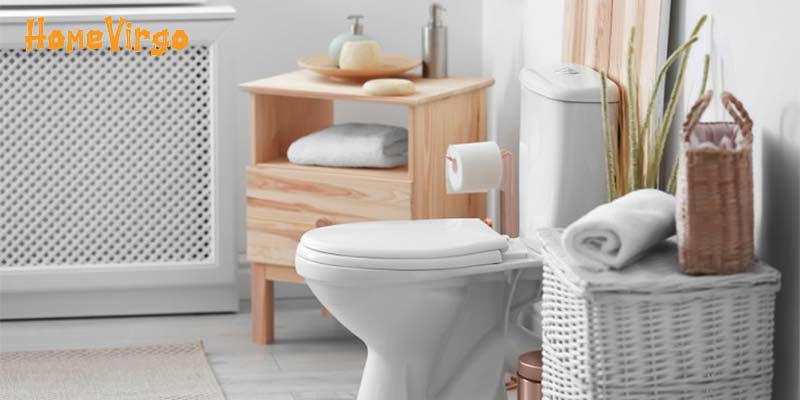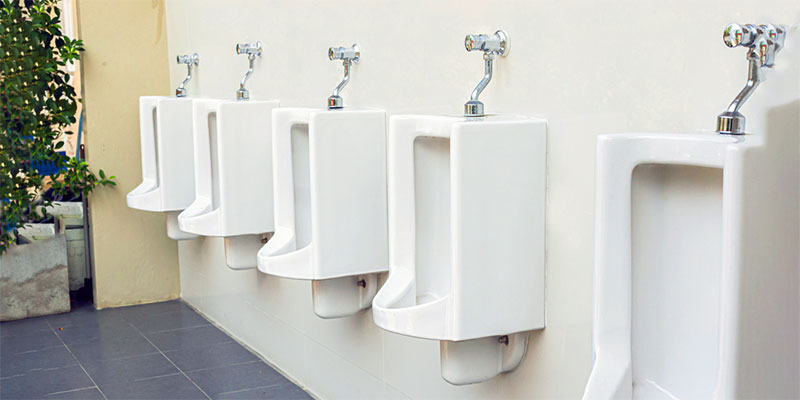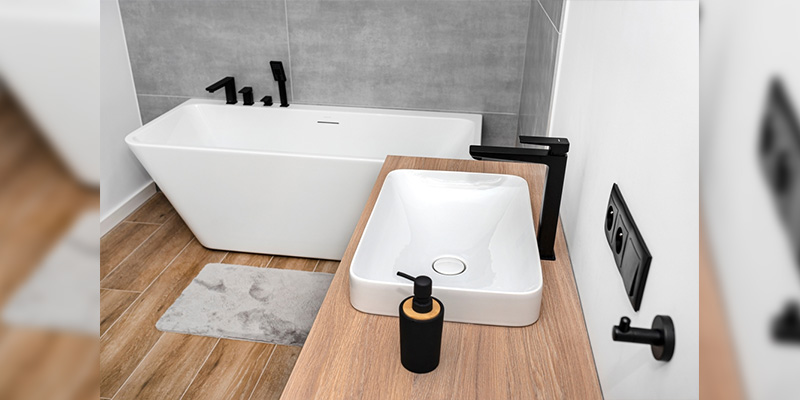Pressure Assist Toilet vs Gravity

Gerber Toilet Reviews; Pressure Assist Toilet vs Gravity
What’s the difference between a pressure toilet vs gravity-fed toilet? In most senses, it’s self-explanatory; one is flushed using a pressure system and the other via gravity flow.
The world of bathroom utilities has only ever had one type of toilet as its front runner, until now. A new flushing mechanism was invented and has taken the industry by storm.
The vast majority of households in the world still use gravity-fed systems because it has been the only option for so long. Now with the rise of a new more efficient system, there seems to be a new market opening up for the pressure flush mechanism, and we’ve done some research into what the differences are, and what the advantages and disadvantages are between them.
What is a Pressure Assist Toilet?
This type of toilet has a flushing mechanism that uses a pressurized tank to push water into the bowl with high levels of force. Where the water is stored in a regular type of toilet, is where the pressure system is stored in a pressure-assist toilet.
The system unit displaces air with water creating a pressurized cavity. When triggered, water is pushed into the bowl taking all the waste with it. The flushing mechanism has a whooshing sound as air runs through the system, pushing the water out. The water supply to the toilet leads into the pressure cylinder which allows the cavity to generate pressure without a pump or motor. When the chain is flushed the water supply begins filling up the pressure tank and the process repeats.
What Is a Gravity-Fed Toilet?
A gravity-fed toilet is exactly that. It is a flushing mechanism that uses the force of gravity to push the waste down. When the handle is engaged it lets water flow from the tank down into the bowl increasing the volume of water in the bowl, creating a siphoning effect that allows for the waste to exit into the pipes and be pulled out of the bowl. Another pipe lets freshwater flow into the tank until a float switches it off.

A gravity-assisted toilet has a slow and weak flushing system. The size of the tank, (how many liters of water it can store), and the height of the tank above the bowl will determine how well the toilet flushes. Most gravity-assisted toilets these days are more efficiently designed and can manage with less volume in the tank but can sometimes need a little boost here and there.
Advantages and Disadvantages
Price
A pressure-assist toilet is generally more expensive than a gravity-fed unless your gravity toilet is made of gold. These toilets are normally made out of ceramics just like a gravity toilet but the intricate pressure cavity cylinder inside the tank will have a steeper price attached to it for obvious reasons, and there might be a need to get the sewerage delivery pipes to be replaced for stronger pressure-resistant ones due to the increased levels of pressure inside the pipes.
A gravity flush toilet will have a similar build and design in terms of ceramic material but will require much less equipment going into the tank. So the price with simple plumbing pipes connected will be less, and the likelihood of having to replace pipes or buy more expensive pipes is very low.
Maintenance and Repairs
The extensive availability of parts for gravity toilets makes them very easy to repair if damaged. Normally these toilets have a very long lifespan due to the simple nature of their design, but it does happen sometimes where the handle will break or a leak will develop due to high-temperature fluctuations,(hot-cold-hot-cold). So you might have to replace a part or two once in a while but fear not because you can find these parts at basically any general hardware store or home store.
The pressure-assisted toilet is more of a recent invention and so many places might not stock parts for such systems. Depending on where you live the availability might change but in general, there will be a place online to buy spare parts from if all else fails. The pressure cavity located inside the tank is a complex mechanism that needs to remain airtight as well as watertight at all times, so in order to repair the system, you might need to contact a specialist who has experience working with pressure cavities.
The gravity-fed toilet can be repaired by you at home without too much hassle and shouldn’t cost much for the parts, whereas a pressure-assist will cost more for the parts and as said before will probably require a specialist. A gravity-fed toilet is also less prone to damage because of the open gravity design there is no high pressurized water bulleting through the pipes. A pressure-assist has constant pressure attacking the joins and nozzles of pipes, so unless you have the correct pipes, leakages might appear quite often.
Hygiene and Efficiency
The beauty of the pressure assist toilet is that it is very effective at flushing down waste. The high-pressure flush leaves nothing behind and for that reason, more hygienic. If the toilet is stationed in a factory or industrial setting where the toilet is used by a large number of people every day, then it might be a good idea to go with a pressure-assist version.
With constant use on a gravity toilet, you will begin to accumulate a lot of mess in the bowl, and without a high-pressure flush, oftentimes some waste will be leftover in the bowl, which is certainly not a nice thing. So employing a cleaner will be the only hope of maintaining good hygiene standards at work or for a public restroom.
A pressurized flushing mechanism will eliminate this problem because it is very uncommon that waste is ever leftover in the bowl. Testing experiments were carried out on this flushing mechanism to see how much it would take to clog this type of toilet. The tests ranged from a small book to half a dozen golf balls being tossed into the bowl and flushed. It managed to flush the book and half a dozen golf balls as well as toys and even a stuffed animal!
Hopefully, this wouldn’t be the case for a public toilet, but maybe if you have kids at home and you’re worried about one of them dropping something into the bowl and ending up blocking the whole pipe system, then it would be a good investment to pay the higher price and get a pressure assist.
Water Usage
A gravity-fed toilet tends to use quite a large amount of water when flushed, normally around 6 liters depending on its size. An assisted one will use roughly 4 liters or less per flush. So you can save water as well as being hygienic.
A gravity toilet can also develop a slight leak from the tank into the bowl which causes the filler pipe to constantly spill water into the tank, which is a huge waste of water. With a pressure toilet, this won’t happen because of the water-tight cylinder in the tank.
In some pressure-assist toilets, there is also no water that sits in the bowl, which is beneficial for hygiene safety because you don’t have bacteria and diseases forming inside the toilet, which is another added benefit to water saving.
Noise
A downside that remains unresolved in pressure-assisted toilets is the loud noise that the toilets make when flushing. Due to the air displacement created in the pressure cylinder, when you flush the toilet the air runs through the system while pushing the water out at high speed, and so creating an airplane-type landing noise.
If you’re the type that might get up in the middle of the night to get a snack or go to the bathroom, then you’ll want to take care because the rest of the house might think that an alien ship is stealing your house away from all the noise that the toilet is making. That’s a bit of an exaggeration but it is quite a lot louder than a regular toilet.
Pressure Generation
There is obviously no need for a gravity-fed toilet to have any form of pressure generation which is an additional factor that will give you one less thing to worry about. However, with a pressure toilet, you will need a steady and strong water supply. So if you live on top of a hill you’ll most likely not be able to run this type of flushing mechanism properly.
The water supply needs to sit comfortably at around 25 pounds per square inch in order to generate enough air displacement to properly pressurize the tank. You can check if you meet these criteria either by buying a pressure gauge and checking it yourself or hiring a professional plumber to come and do it for you.
Which is The Best?
As far as I can remember in my life, gravity-assisted or regular toilets have worked perfectly well over the years. I can remember when I’ve walked into public restrooms with gravity-fed toilets and to say the least, it’s just a sight for sore eyes, but otherwise, I’ve never had a problem with them. They are cheap and easy to maintain, with spare parts being readily available. Plus, it’s easy for any ol’ person to fix them.
On the other hand, if pressure-assisted toilets had been common for public bathrooms or corporate workspaces, then by all means I probably wouldn’t have dreaded going into one of the stalls so much. Nowadays, I can attest that they work wonders for such purposes, even if they are a little noisier. It is cleaner and more hygienic which is a win-win!
For home, I don’t know that I’d rush to get a pressure-assisted version so quickly. The noise can off-putting and especially if you’re up in the middle of the night, it’s quite nice if you don’t have to wake up the whole neighborhood. Although, I don’t have kids, so I wouldn’t need to worry about clogged drains. I’ve heard a fair number of stories about blocked drains and to my satisfaction, I’m glad that it hasn’t happened to me yet.
If you do have kids then it might be a good idea to get something that can deal with all the fuss of a full house as well as unexpected things finding their way into the toilet bowl, and magically being flushed down. The only problem of course is the cost.
Spare parts are quite expensive, and that’s considering whether you can actually find them in the first place. However, if you can afford it, these pressure-assisted mechanisms won’t let you down as far as hygiene and effective flushing goes.
Final Thoughts
The small details in life are the things that make or break us sometimes. If you’ve spent a full day at work and come home to have to sit in the bathroom for 3 hours trying to unclog a toilet, it might just push you over the edge. So choose what’s best for your lifestyle and needs.
A higher price might seem like the worse option but if you’re saving yourself unnecessary stress then why not go for it. The less you have to worry about, the more time you can use to focus on the good things in life. A gravity-assisted toilet will function perfectly if it’s treated right, and just like anything else. If you abuse it then you mi8ght be sorry.
A pressure-assisted toilet works wonders, and yes it might be a little noisy, but you’ll probably get used to it pretty fast anyway. Check to see if there are places that sell spare parts readily and make sure they are of decent quality.
Otherwise, the choice is yours. If you’re part of civil services, try recommending to the powers that be, to get some pressure-assisted toilets put into the public restrooms and if you’re an employer with lots of employees then I might recommend that you get some highly functional toilets for the work restrooms as well.
After these Gerber toilet reviews, I hope that you have more in-depth knowledge about these two different types of mechanisms, and now that you’re the expert help out others and pass on the information.




